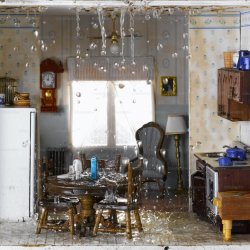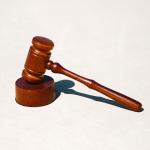Tackling Mold: A Comprehensive Guide to Proper Remediation
Mold infestation can cause damage to the property and pose serious health risks if not properly contained in your house or workplace. Proper mold removal ensures ecological safety. This manual examines the most effective ways of addressing mold problems, including the time for hiring experts in mold remediation.
Understanding Mold and Its Dangers
There is a certain type of fungus that thrives in wet or damp environments and it goes by the name mold. Mold can be found growing on different types of items like furniture, rooftops, floors or walls. Most species of mold do not cause any harm though some produce mycotoxins that are dangerous and also lead to allergic reactions and irritations.
When exposed to mold, people with weak immune systems might suffer a variety of ill health conditions. This includes respiratory problems, allergic reactions, and prolonged medical problems. Besides, avoiding the removal of mold can lead to massive expenses in fixing the house due to its ability to destroy your home’s structure.
Identifying Mold Growth
The first step in proper mold remediation is identifying the presence of mold. Here are some common signs to look for:
- Visible mold growth on surfaces
- Musty or earthy odors
- Walls, ceilings, or floors with water stains or discolorations
- Persistent moisture or condensation problems
When you have suspicions about mold growth in your home or office space, it is necessary that you take immediate action so as not to allow it spread any further leading into probable health dangers.
Preparing for Mold Remediation
It’s important that you initiate the remediation process yourself by taking precautions so that you don’t expose yourself or anyone else to these dangerous chemicals.
- Put on the proper personal protective equipment (PPE), such as gloves, respirators, and eyewear.
- Contain the affected area by sealing off doors, vents, and other openings
- If there is significant or severe mold development, think about contacting a professional mold treatment agency.
Effective Mold Remediation Steps
Follow these steps for effective mold remediation after you have taken necessary precautions:
- Identify and address the moisture source: Mold grows in wet areas, which is why it is important to detect where there is dampness fueling its growth so that this can be curbed off entirely. Possible actions may include repairing any leakages present, enhancing airflow as well as fixing any water leaks around your premises.
- Remove porous materials: If porous materials like drywall, insulation or carpets have been severely affected by mold, they probably should be removed and replaced because even if they are treated for these materials might still have mold spores making it hard to clean them up.
- Clean non-porous surfaces: Cleaning those surfaces requires detergent mixed with water or special anti-mold agents. They can then be scrubbed and left for drying completely. Non-porous surfaces like hard plastics, concrete, and metal require detergent and water or a special mold-killing solution in order to be cleaned. Scrub these surfaces carefully before leaving them till they completely dry up.
- Dry the affected area: It's necessary to make sure the impacted region is totally dry after washing. Utilize dehumidifiers, fans, or other drying tools to eliminate any residual moisture that can encourage the formation of mold.
- Consider professional mold remediation services: It is advised to contact expert mold remediation services for large or severe mold development. These professionals can safely and successfully address mold problems, safeguarding the environment's long-term health and safety, thanks to their equipment, training, and expertise.
When to Seek Professional Mold Remediation Services
Although it's possible to handle some small-scale mold problems without hiring professionals, it is necessary that you find expert mold removal services in the following cases:
- Anytime the area is bigger than 10 square feet Should it grow within HVAC systems or other such inaccessible spots
- When caused by sewage or other dirty water types
- If a family member has allergies, asthma, etc.
- If you (or any other person residing with you) have weak immunity systems, then don’t allow this kind of fungi to cover.
Preventing Future Mold Growth
After finishing the mold remediation, it is important that preventive measures are taken to prevent re-growth of mold in the future. Address any such details, for example leakage, dew point condensation or excessive humidity. Enhance aeration in locations where water tends to collect. Regularly assess and clean areas where mold multiplication may take place. While improving your place of residence or mending spoilt areas, apply substances resistant to mildew. If remain in such an environment our lives will be at risk.
A safe and healthy living or working environment is dependent on proper mold treatment. It is possible to efficiently handle mold concerns and stop future growth by adhering to the specified methods and, when required, hiring expert mold remediation services. Remember that the secret to a successful mold remediation process is moving quickly and putting safety first.
More to Read:
Previous Posts:




